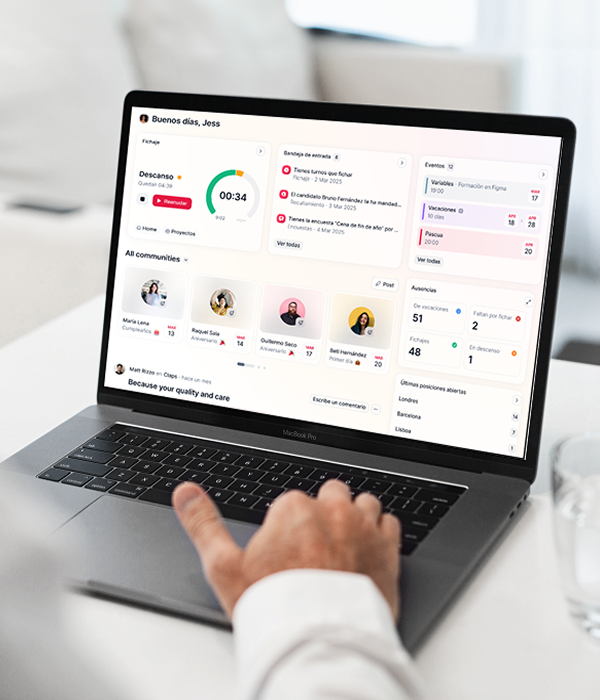Staying on top of your projects is essential to keep growing your business and ensuring your team is effectively managing their tasks. That’s where project management comes in, but what exactly does project management mean? Although it is a familiar term, understanding what the best practices look like in project management could be difficult to narrow down. In this article, we take you back to basics with a definition of project management, an overview of different methods, a step-by-step guide and common pitfalls to avoid.
Introduction to Project Management
Project management is the process of planning, organising and allocating resources to achieve a specific objective with a defined timeframe, scope and budget. It is a structured approach that involves applying knowledge, skills, and techniques to support a project from inception to successful completion.
Project Management Basics
Effective project management has several different elements:
- Goal setting and planning: defining the objective and creating a detailed plan to achieve it.
- Resource management: allocating the required resources (money, people, materials) in the right places.
- Scheduling: creating a realistic, sustainable timeline that executes tasks in the correct order to achieve the project’s objectives.
- Monitoring: tracking progress against the plan, identifying issues, and adapting the plan as needed to mitigate risks and keep the project on track.
- Communication: supporting collaboration within the project team and communicating updates to key stakeholders.
- Leadership: motivating the team, resolving issues and keeping the project on track.
- Closure: finalising all the different elements of the project and evaluating the outcomes.
Key Elements of Project Management
The foundations of project management revolve around communication, planning, clarity, and continuous evaluation, and provide an operational structure that turns a project from a plan on paper (or screen) into a successful outcome.
Project Scope
The project scope defines the deliverables. By including clear expectations, the project scope can prevent changes to the overall objective that could derail a successful outcome.
Timeline
A significant element of project management is the schedule or timeline, which includes a work breakdown structure (WBS) to provide clarity around the different elements required. The inclusion of milestones and deadlines helps keep tasks on track, avoid delays, identify issues and deliver projects on time. Properly managing your team’s time while working on projects is vital to stay on track with your projects and also calculate billable hours to charge your clients.
Budget and Resource Allocation
Project management involves efficiently allocating the appropriate resources to ensure the project has everything it needs to succeed. Resources include the work done by individuals, specific material requirements and financial inputs. Being on top of resource allocation and budgeting is key to delivering a successful project on time and on budget.
Risk Management
Being able to identify potential risks to a project, assess their impact and plan an appropriate response is an essential element to successful project management. Effective risk management reduces uncertainty and enhances the project’s ability to adapt to challenges.
Communication Plan
Having a communication plan ensures that everyone involved in the project, including key stakeholders, is aware of how, when and why they will receive communication. It clarifies reporting structures, meeting objectives, and decision-making channels. Setting clear expectations around communication at the start of a project reduces misunderstandings and helps resolve issues more easily.
Roles and Responsibilities
Linked to the communication plan, clarity around each team member’s roles and responsibilities can reduce confusion, overlap, and gaps in work. Many teams use tools such as a RACI matrix, which allocates those involved into responsible, accountable, consulted and informed sections.
Quality Management
At the heart of project management is the successful delivery of the project. Having a quality management process ensures that deliverables meet the agreed standards and expectations set at the start of the project. Quality management means considering both the required standards for the processes involved (quality assurance) and the outputs (quality control).
Tracking and Reporting
Tracking how the different elements of a project are progressing identifies issues and supports early intervention to avoid serious derailment. Tracking and reporting tools include dashboards, KPIs, OKRs, weekly status updates and burn-down charts.

5 Phases of the Project Management Lifecycle
There are five phases to project management:
1. Initiation
At the start, this phase defines what the project is and why it is essential. It aims to get approval to start planning the project.
Key activities include:
- developing a business case
- defining project goals
- identifying stakeholders
- writing a project charter
- assessing feasibility
2. Planning
The next phase requires a considerable investment of time. The planning stage aims to define and agree on the execution of the project, resulting in a clear roadmap that guides the entire project team.
Key activities include:
- defining scope
- building the schedule
- budgeting
- identifying risks and creating mitigation strategies
- allocating resources
- creating communication plans and quality management strategies
3. Execution
During phase three, the project team begins work following the steps outlined in the plan and starts delivering key objectives.
Key activities include:
- coordinating people and resources
- tracking progress
- managing communication
- ensuring quality
- delivering outputs
4. Monitoring and Controlling
Monitoring and controlling runs alongside the execution phase to ensure that the work involved stays on track, any issues are dealt with promptly, and the project remains aligned with its eventual objectives.
Key activities include:
- tracking performance (time, cost, scope, quality)
- identifying issues and adapting to changes
- updating progress reports
- risk monitoring
5. Closing
The formal completion of the project involves officially stopping the work involved and spending time evaluating what went well and noting improvements for the future.
Key activities include:
- confirming the deliverables are complete
- obtaining stakeholder sign-off
- releasing project resources
- documenting lessons learned
- closing contracts
- celebrating the success
👉 Download your free project tracker to stay organised and work effectively.
Popular Project Management Approaches
There are several popular approaches to project management you may have heard of. Here we outline four of the most commonly used.
Waterfall
The waterfall method is a sequential approach in which each phase is completed before the next begins, like water flowing through a waterfall. It is commonly used in projects with well-defined requirements, such as software or construction development, and is less suitable for projects where requirements may change significantly during the process. Due to the focus on sequential phases, the waterfall method is also sometimes referred to as the linear project management process.
Agile
The agile method takes an interactive approach, breaking large tasks into small, manageable cycles called “sprints” or “iterations,” which usually last 1 to 6 weeks. Using these short, time-boxed phases allows project teams to deliver value on the project regularly and to pivot easily when required, hence the name. The agile approach prioritises flexibility, collaboration and feedback; it puts continuous improvement and a focus on the people involved in the project at the heart of the process.
Hybrid
The hybrid model combines elements of different approaches, typically waterfall and agile, to create a tailored approach driven by the project’s needs. Using various approaches allows project teams to capitalise on the strengths of each while mitigating against their respective weaknesses. For example, the waterfall method can provide the detailed, strategic focus required for certain aspects of a project, while agile is a more flexible, people-focused approach that moves quickly to meet specific requirements.
PRINCE2
The PRINCE2 method is a project management framework for managing projects from initiation to closure, using a set of processes, principles, and themes for each phase. It has clear roles and responsibilities, manageable stages and a well-established framework. The core components are a step-by-step approach with seven phases: starting, directing, initiating, controlling, managing product delivery, managing a stage boundary, and closing (processes); rules for the project (principles); and aspects such as risk, plans, quality, and issues that are continuously addressed (themes).
📌 Invest in project management software for enhanced collaboration and centralise your time tracking, documents and more.

Key Project Roles & Responsibilities
Within any project, there are several key project roles and responsibilities, which we outline here:
Project Sponsor
The sponsor is the most senior person who “owns” the project. Their responsibilities usually include:
- defining the strategic purpose
- approving the budget, scope and significant changes
- providing guidance and leadership
- acting as a champion for the project and helping to remove obstacles
Project Manager (PM)
The project manager manages the project daily. Their responsibilities usually include:
- creating project scope, schedule and budget
- managing the team
- tracking progress and managing risks
- communications
- meeting quality standards
Project Team Members and Subject Matter Experts (SMEs)
The SMEs and team members are the people who do the work required to deliver the project. The project manager usually manages them, and their responsibilities include:
- completing their assigned tasks and deliverables
- providing technical expertise
- supplying estimates for the work involved
- flagging risks or issues
- working with other team members
SMEs can include people working as analysts to ensure the project adequately addresses the business need, and experts in specific project management approaches, such as scrum masters for the agile method and product owners who focus on defining the requirements for specific aspects of the project.
Stakeholders
Stakeholders are individuals or groups affected by the project or interested in its outcomes. They can include end-users, team members, managers, and executive sponsors. Some stakeholders, particularly senior leaders or project sponsors, also provide executive oversight to ensure the work aligns with business objectives. Their responsibilities usually include:
- providing input and feedback on project progress
- staying informed on progress
- participating in reviews or approvals as required
How to Manage a Project: Step-by-Step Guide
Starting to think about managing a project can be daunting. It can help to break it down into the distinct tasks required using our sequential guide:
Step 1: Clarify the objective and define the success criteria
Step 2: Secure sponsorship
Step 3: Identify key stakeholders and decision-makers
Step 4: Scope the work
Step 5: Build the plan: create a schedule, budget and resources
Step 6: Identify risks
Step 7: Define quality standards, roles and the governance structure
Step 8: Kick off the project
Step 9: Manage the team
Step 10: Monitor, track and respond to changing requirements
Step 11: Communicate with stakeholders
Step 12: Conduct quality checks and run tests
Step 13: Prepare operational teams for handover and run training if required
Step 14: Close the project and evaluate
👉 Grab your free project tracker to organise your tasks and collaborate more efficiently.
Common Pitfalls to Avoid
Whatever the size or complexity, managing projects involves juggling priorities, people and processes. It’s not surprising that things go wrong, but there are some common pitfalls that you can avoid:
Unclear Objectives
Pressure to start quickly or vague stakeholder expectations can lead to objectives that are not clearly defined, time-bound and understood by all. Starting a project without a clear definition of success makes it hard for the team to focus on what they need to deliver.
How to avoid:
- create a project charter and scope statement
- define the boundaries of the project
- include SMART goals
Scope Creep
Scope creep is the uncontrolled expansion of the project’s tasks and expectations. It often happens when requirements change mid-project or when the project manager struggles to say no.
How to avoid:
- create a formal change process
- document requirements
- communicate the trade-offs involved in making changes to the scope
Poor Communication
Assumptions that everyone knows what they need to know, a lack of a communication plan, and updates delivered in a format people don’t engage with can all lead to misunderstandings about what’s happening on the project, ultimately derailing its success.
How to avoid:
- make sure a communication plan is part of the initiation work
- tailor updates appropriately to the audience
- create a regular rhythm in terms of how you communicate
Poor Risk Mitigation
Poor risk mitigation occurs when project teams react to issues after they occur rather than tracking their project’s development to identify potential problems ahead of time. It happens when there is a bias towards “things being OK” rather than thinking about what could go wrong.
How to avoid:
- use a risk register to keep track of potential issues, however small
- Review the risk register regularly
- Create contingency plans
Underestimating Requirements and Resources
Often, projects fail because they simply do not have the right resources to meet the requirements. Not having enough resources happens when there is pressure to reduce the estimates or when key stakeholders do not adequately understand what is required to make the project successful.
How to avoid:
- focus your planning on known availability and capacity rather than the ideal scenario
- use past data or the input of experts to make decisions based on reality
- build in a contingency to cover the unexpected costs
Project Management FAQs
- What is a sprint in project management?
A sprint in project management is a key part of the Scrum framework in the agile method. When project members are working in a sprint, they are working together to complete a set of prioritised items within a fixed, time-boxed period. Each sprint focuses on delivering a quality outcome at pace.
- How to manage a project with Factorial?
Factorial supports project management in several ways. As well as being able to create “projects” in the business management system which you can then use to schedule, assign resources and track progress, Factorial also supports goal-setting, performance management and reporting tools, which allow project managers to communicate more widely, manage their teams and keep on top of how a project is progressing.
- Is PRINCE2 still relevant in the UK&I?
PRINCE2 remains relevant in the UK and Ireland. It is as a reliable framework for managing risk and maintaining consistency across large or complex projects. However, organisations increasingly use hybrid project management methods to achieve a balance between structure and flexibility.
- What is the difference between agile and waterfall?
The waterfall method is sequential, with each phase completed before moving to the next, whereas the agile method focuses on delivering specific tasks within a short and clearly defined time frame in an iterative, flexible manner.
- What is a project lifecycle?
A project lifecycle is the entire process a project goes through, from initiation through planning and execution to delivery and closure. It provides a clear roadmap for organising the work and resources required to deliver a successful project.


